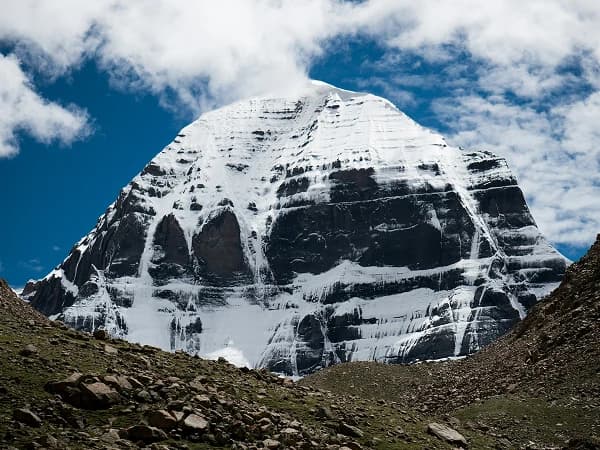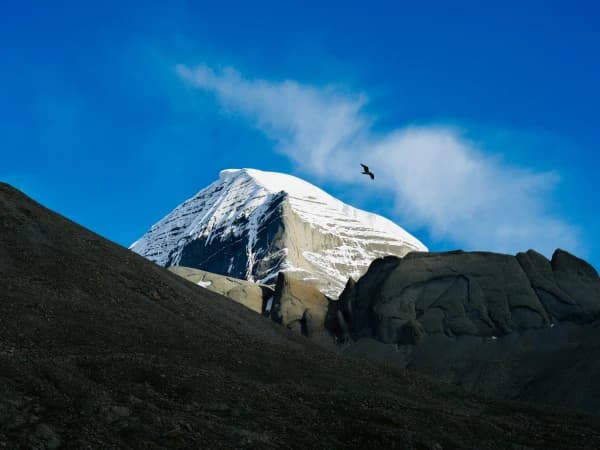Tihar and its 5 days
Tihar, often referred to as the festival of lights, is one of the most vibrant and spiritually rich celebrations; yet its essence extends far beyond the flickering oil lamps and dazzling decorations. Unlike any other festival in the world, Tihar, a five-day celebration, honors not only gods and goddesses but also animals like crows, dogs, and cows- each symbolizing a deeper spiritual connection. Streets glow with rows of oil lamps (diyas), homes are decorated with colorful rangolis, and families come together to celebrate love and gratitude, especially during Bhai Tika, a day dedicated to the bond between brothers and sisters.
The first day of Tihar is Kaag (crow) Tihar, where crows are worshipped with tika, mala (flower garland), and their favourite foods. It is believed that in the past, when there were no phones or any media to communicate with people living at a distance, crows were the messengers for communication. People used to write letters to others and send them via crows.
The second day is Kukur (dog) Tihar, a heartwarming occasion dedicated to celebrating the loyalty and protection of dogs. On this day, dogs, whether pets or strays, are honored with tika, flower garlands, and delicious food. It's a beautiful tradition that recognizes their role as faithful guardians and friends. This celebration often touches travelers, as even street dogs are lovingly included and treated with kindness and respect.
The third day is Gai Tihar and Laxmi puja. In the morning, cows are worshipped for their nurturing nature and importance in daily life. They are offered treats and adorned with garlands and red tika. In the evening, the focus shifts to Laxmi Puja, when homes are thoroughly cleaned and decorated with oil lamps, candles, and rangoli to welcome Goddess Laxmi, the goddess of wealth and prosperity. It is believed that Laxmi only enters clean, well-lit homes, so every corner glows with hope and devotion. Families pray together, light rows of diyas, and enjoy special festive foods and sweets.
The fourth day of Tihar, known as Govardhan Puja, holds deep spiritual and cultural significance in Hindu tradition. It is believed that on this very day, Lord Krishna lifted the Govardhan Parbat just to protect the villagers of Gokul from the wrath of Lord Indra. Celebrating this special day represents our faith, humility, and the power of devotion. The process of celebration has been passed down from our ancestors, as we celebrate by making a small replica of Parbat from cow dung, decorating it beautifully, and offering prayers, flowers, and food, which resembles offering all this directly to Lord Krishna. This is a reminder for us that we should live in harmony with nature and trust in divine protection. On the day preceding Tihar, the Newar community celebrates Mha Puja, a ritual dedicated to honoring the self and invoking prosperity for the year ahead.
The Last Day of Tihar, Bhai Tika, celebrates the pious and eternal relationship between brothers and sisters. On this special occasion, sisters prepare a beautifully decorated thali with flowers, fruits, sweets, and a mixture of seven-colored tika, which indicates the seven colors of the rainbow. On Bhai tika, to pray for our brother’s long life, we prepare a ceremonial plate with sel roti, money, fruits, flowers, bimiro, and small iron objects. We light seven batti on that plate and perform a ritual using seven colors, gently rotating the plate three times over our brother’s head before placing it on the crossroads, symbolically ensuring his well-being and blessings. At the main entrance of the house, we break a walnut (Okhar), symbolically praying that all obstacles and hardships in our brother’s life are shattered and swept away just as a walnut breaks. With deep affection and prayers, sisters apply the tika on their brothers’ foreheads, wishing them protection, prosperity, and a long, healthy life. In return, brothers offer gifts and heartfelt promises to support and care for their sisters in every stage of life. On this beautiful occasion, families come together to share blessings and memories. More than just a ritual, Bhai Tika is a timeless tradition that symbolizes love, faith, and unity- a beautiful reminder of the unbreakable connection that binds siblings and generations together.
When is Tihar celebrated?
The second most important festival of Nepal, Tihar, is often celebrated during October or November. This year, in 2025, Tihar will be celebrated from October 19 to October 23, 2025.
Why is Tihar called the festival of lights?
Tihar is often called the festival of lights because it defines the triumph of light over darkness and also good over evil. Throughout this five-day celebration, the homes are decorated with colorful string lights from outside and lit up with oil lamps and candles from inside; all to welcome goddess Laxmi, the deity of wealth and prosperity. The lights during Tihar are not just physical, but also spiritual. It represents hope during hard times, wisdom that overcomes ignorance, and kindness that dispels negativity. Therefore, Tihar is called the festival of lights not just because of diyos and decorations, but also because it brings light into every part of life
What is Deusi-Bhailo?
One of the most colorful and charming Tihar customs is Deusi-Bhailo, in which young people, children, and occasionally adults group and go door to door singing folk songs and dancing. Girls play Bhailo on the evening of Laxmi Puja, and the boys sing Deusi on the subsequent evening. These songs are filled with wishes, humor, and social mores, bringing to the families they visit prosperity and good fortune. As a return gift, host families offer sweets, fruits, sel roti, and money as symbols of appreciation. Far from being mere entertainment, Deusi-Bhailo reinforces the social ties and the spirit of sharing, happiness, and cultural pride that define Tihar.
What is Bhai Tika and why is it special?
Despite those silly fights and endless teasing, a brother and sister’s bond is one that time only strengthens—Bhai Tika is a beautiful reminder of that unspoken love.Bhai tika is the fifth and the final day of Tihar festival, celebrated to honor the bond between brothers and sisters. Sisters put on seven colored tika in their brothers forehead praying for their long life and prosperity, while brothers give gifts and vow to protect their sisters.
What are the special foods prepared for Tihar?
The special foods prepared for tihar are
Selroti
Fini roti
Anarsa
Khurma
How does the celebration of Tihar differ among various ethnic groups in Nepal?
Newar
The Newari people place strong emphasis on Mha puja, celebrated on the new year of the Nepal Sambat calendar. Mha puja includes ritual purification, making mandalas for each other, and self-blessing for a healthy and prosperous life.
Bahun / Chhetri
Tihar does follow the more traditional Hindu tradition. They celebrate each day between Kag Tihar (crow worship) and Bhai Tika (sisters blessing brothers). Lighting oil lamps for Laxmi Puja, worshipping dogs and cows, and playing Deusi-Bhailo are common practices. These societies emphasize family rituals as well as the religious aspect of the festival.
Tharu
In the Tharu community, especially in the eastern Terai, Tihar is connected with the festival of Sama-Chakewa, which celebrates sibling love and social bonding. Women gather to sing folk songs and make clay models of birds to tell the story of Sama and her brother. The festival becomes a time for cultural expression and common harmony.
What are some lesser-known rituals or customs associated with Tihar that are not widely practiced?
Tihar is well-known for lights and Bhai Tika, but it has some lesser-known practices. Mha Puja, which is practiced by the Newars, is a self-worship practice for purification and recharging. Govardhan Puja is celebrated in villages to propitiate oxen for their role in farming. Some women make mandalas of grains to invite Goddess Laxmi. There is also Kija Puja, where sisters without brothers put tika on the moon symbolizing sibling love. These modest traditions give unique meaning to the festival.
What is the historical origin of the Tihar festival?
Tihar, also known as Deepawali or Yamapanchak, originates in Hindu mythology. It is the celebration of the visit of Yamraj, the death god, to his sister Yamuna, who welcomed him with tika and wishes for his long life. Touched by her love, he blessed that any brother receiving tika from his sister would be fortunate. This became the tradition of Bhai Tika. The festival also honors animals like crows, dogs, and cows, symbolizing respect for all forms of life. Tihar has become a wonderful celebration of light, life, and family relationships in Nepal over time.
How have modern influences changed traditional practices during the Tihar festival?
Modern influences have had a deep effect on the celebration of Tihar in Nepal, blending traditional practices and modern life. While the spirit-worship, bonding, and festivity remain the same, most practices have been adjusted to the pace of modern life.
A major change is in the use of electric lights and adornments. Traditional oil lamps have given way to colorful LED lights and string bulbs, especially in urban areas. Similarly, shop-bought rangolis, garlands, and sweets are now more widespread, replacing homemade or handmade ones that used to be created with effort and family participation.
The Deusi-Bhailo door-to-door singing and dancing tradition by children and youngsters has also evolved. It has been commercialized in most places, with groups performing for money instead of a cultural or community practice. In cities, the tradition is vanishing completely because of security concerns and busy lifestyles.
Technology and social media have also affected the festival. Virtual Bhai Tika is being observed now by families who live abroad or are distant from one another, making video calls to carry on the ritual. Gift-giving has also changed, with online shopping and electronic transfers taking the place of customary offerings.
Despite all these alterations, Tihar is still a vibrant and important festival. The synthesis of traditional and modern elements reflects Nepal's rich culture, where tradition is honored, even as modern life deflects its course.
Therefore, the Walk Mountain team wishes you a Happy Tihar.




